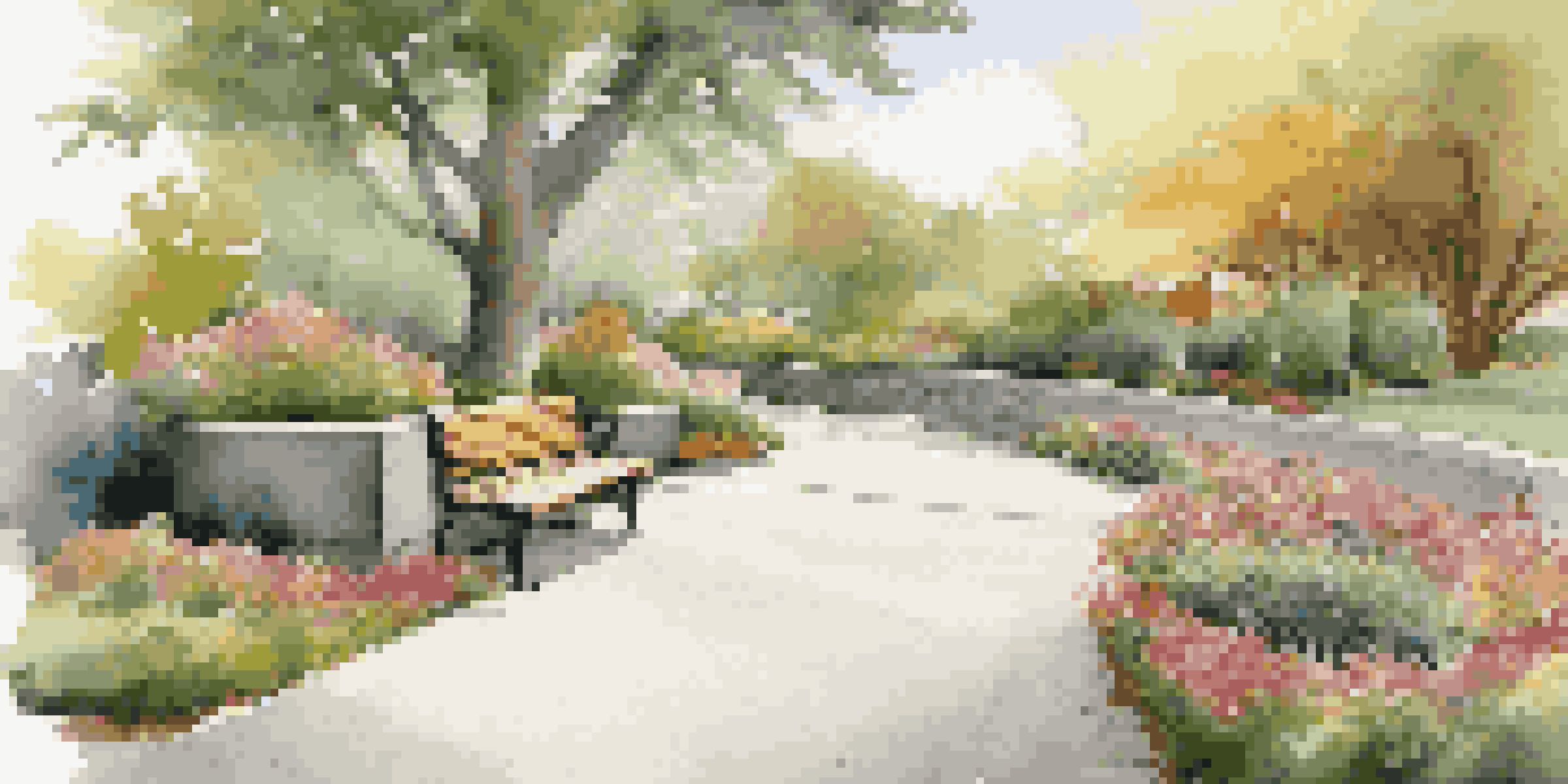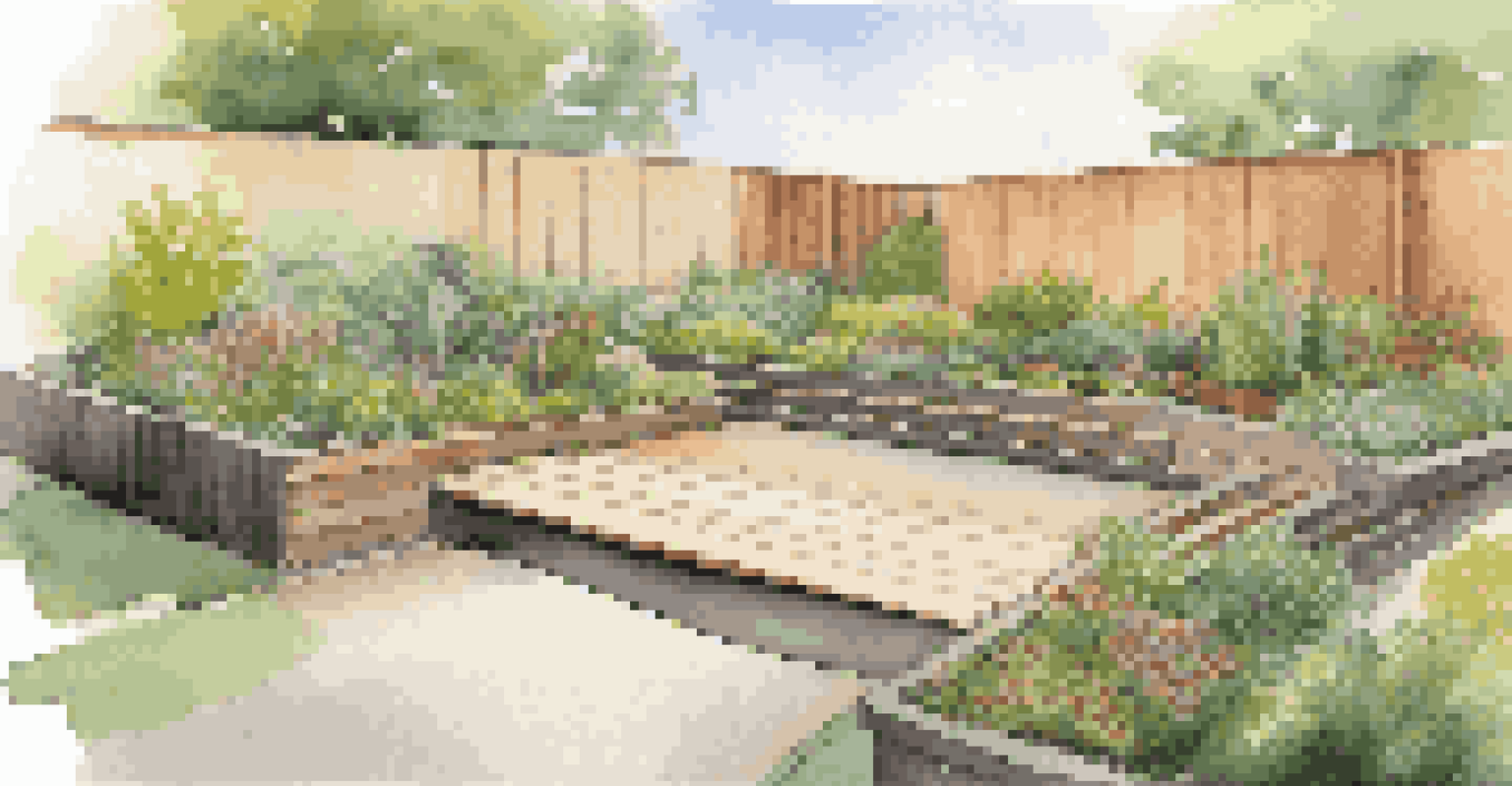Guidelines for Creating Accessible Outdoor Pathways at Home

Understanding the Importance of Accessibility in Pathways
Creating accessible outdoor pathways is essential for ensuring everyone can enjoy your outdoor space. Accessibility means making sure that all individuals, regardless of their mobility or abilities, can navigate pathways safely and comfortably. This includes considering children, seniors, and those with disabilities who may need extra support while moving through your yard.
Accessibility is not a privilege, it's a right.
When pathways are designed with accessibility in mind, they promote inclusivity and community. Imagine a neighborhood where everyone feels welcome to stroll through gardens, enjoy a barbecue, or simply spend time outdoors. By prioritizing accessibility, you’re not just improving your home's functionality; you’re fostering a sense of belonging.
Additionally, accessible pathways can enhance the overall aesthetic of your outdoor area. Thoughtfully designed paths can lead to beautiful garden features, seating areas, and even outdoor kitchens, making your home a more inviting place for family and friends.
Choosing the Right Materials for Pathways
The materials you select for your pathways can significantly impact accessibility. Opt for surfaces that are smooth and stable, such as concrete or pavers, which are easier for wheelchairs, walkers, and other mobility aids to traverse. Avoid loose materials like gravel or mulch, which can create uneven surfaces and pose hazards.

Consider the weather conditions in your area when choosing materials. For example, if you live in a region that experiences heavy rain or snow, you may want to select materials that are slip-resistant and can withstand these elements. This not only ensures safety but also prolongs the life of your pathway.
Ensure Pathways Are Accessible
Creating accessible outdoor pathways is essential for allowing everyone, including those with mobility challenges, to enjoy your outdoor space.
Lastly, don’t forget about maintenance. Regular upkeep is crucial to keep pathways clear of debris and in good repair. Materials that require less maintenance can save you time and effort while ensuring that your pathways remain accessible year-round.
Designing Pathways with Sufficient Width
The width of your pathways is a critical factor in accessibility. Ideally, pathways should be at least 36 inches wide to accommodate wheelchairs and walkers comfortably. This width allows for two people to pass each other without feeling cramped or unsafe.
The beauty of the world lies in the diversity of its people.
If your space allows, consider creating wider sections at intervals, particularly near gardens or seating areas. These wider spots can serve as resting places and provide opportunities for social interaction, making your outdoor space more inviting and functional.
Remember, a wider pathway not only enhances accessibility but also adds a sense of openness to your outdoor area. It encourages movement and exploration, inviting family and friends to enjoy the beauty of your home’s landscape.
Incorporating Gradual Slopes and Ramps
When designing outdoor pathways, it’s vital to include gradual slopes and ramps, especially if your yard has varying elevations. Steep inclines can be challenging for anyone with mobility issues, so aim for a slope ratio of 1:12, meaning for every inch of elevation, there should be at least 12 inches of pathway.
Ramps should be wide enough to accommodate wheelchairs and have sturdy handrails on both sides for added support. These features not only make it easier to navigate inclines but also instill confidence in users as they move through your outdoor space.
Choose Suitable Materials
Selecting smooth and stable materials for pathways enhances safety and accessibility, making it easier for individuals using mobility aids to navigate.
By thoughtfully incorporating slopes and ramps, you can enhance the accessibility of your pathways while maintaining the natural beauty of your yard. This design approach allows for seamless transitions between different areas and creates a more harmonious outdoor environment.
Adding Clear Signage and Wayfinding
Clear signage and wayfinding elements are essential for accessibility in outdoor pathways. Signs should be easy to read, using large fonts and high-contrast colors to ensure visibility from a distance. Consider using symbols alongside text to cater to individuals who may have difficulty reading.
In addition to signs, incorporating tactile maps or directional markers can enhance navigation for those with visual impairments. These features provide essential information about the layout of your outdoor space and guide users along safe routes.
By providing clear signage and wayfinding aids, you empower individuals to explore your outdoor pathways with confidence. This not only enhances their experience but also encourages independence as they navigate your home’s landscape.
Incorporating Rest Areas Along Pathways
Rest areas are crucial for creating accessible outdoor pathways, especially for those who may tire easily. Strategically placed benches or seating areas allow individuals to take breaks as they navigate longer paths. This can be particularly helpful for seniors or those with mobility challenges.
When designing rest areas, ensure that seating is sturdy and comfortable, with backs and armrests for support. Consider placing them in shaded spots or near beautiful views to create inviting spaces for relaxation and enjoyment.
Regular Maintenance is Essential
Ongoing maintenance of pathways is crucial for keeping them safe and accessible, ensuring a pleasant experience for all users.
By integrating rest areas into your pathway design, you’re not just making your outdoor space more accessible; you’re also enhancing the overall experience for everyone who visits. It encourages people to linger and enjoy the beauty of nature at their own pace.
Maintaining Pathways for Continued Accessibility
Regular maintenance is key to ensuring that your outdoor pathways remain safe and accessible over time. This includes keeping surfaces free of debris, repairing cracks, and addressing any issues that may arise due to wear and tear. A well-maintained pathway is not only safer but also visually appealing.
Seasonal maintenance tasks, such as clearing snow in winter or trimming overgrown plants in summer, are essential for keeping pathways clear and navigable. Make it a habit to routinely inspect your pathways, ensuring they remain in good condition for all users.

By committing to ongoing maintenance, you demonstrate your dedication to accessibility in your outdoor space. This proactive approach not only benefits visitors but also enhances the long-term value and enjoyment of your home.